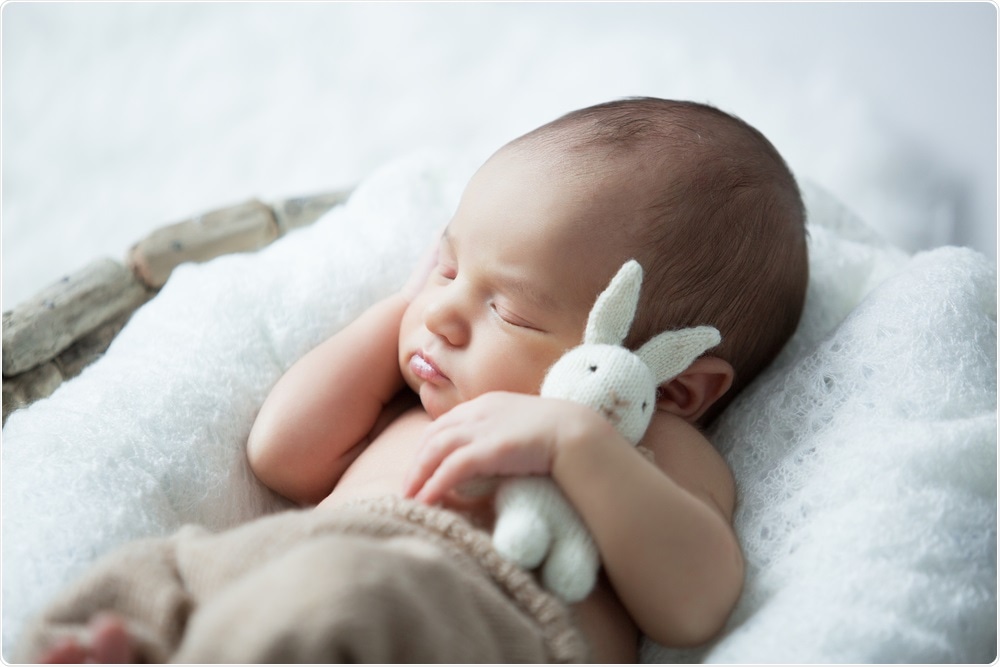To better understand the physiological processes that take place while infants sleep, a group of researchers from the University of Iowa studied the twitching movements of infants during REM sleep. More specifically, the researchers were interested in evaluating how these twitches contribute to the babies’ ability to coordinate their bodily movements.
Sleeping Baby. Image Credit: Alena Sli/Shutterstock.com
Sleep patterns in infants
Between the time of birth and when the newborn reaches three months of age, it is recommended that these young babies sleep between 14 and 17 hours each day. Comparatively, between four and eleven months of age, these babies, which are officially referred to as infants, should get between 12 and 15 hours of sleep each day. It is estimated that between 40% and 70% of infants will experience rapid eye movement (REM) sleep, which amounts to an average of 8 to 11 hours per day in REM.
Study results
In the current study, the researchers recorded 22 sleeping infants who were between the ages of one week and seven months. While sleep, the researchers recorded the brain waves of the sleeping babies to assess their brain activity. Simultaneously, the researchers recorded twitches that occurred both alongside REM sleep as well as those that were found to arise while the infants were in non-REM sleep as well.
Interestingly, both the REM and non-REM twitches appeared exactly the same, which was a surprising finding for these researchers. Since non-REM sleep is typically characterized by a lack of movement, the observation that infants do in fact experience twitches during this stage was not expected.
Rising sleep spindles
An additional observation recorded by the researchers was large brain oscillations, otherwise known as sleep spindles, which occurred once every 10 seconds while the infants were in non-REM sleep. Sleep spindles provide information on the coordination that exists between the brain and the motor system of the individual.
The infants who were between the ages of three months and seven months in this study were found to experience a rise in the rate of their sleep spindles. More specifically, their sleep spindles were found to be concentrated along the sensorimotor strip, which is where the cortex processes incoming sensory and motor information.
Study takeaways
An important observation in the current study was that the sleep spindles and the twitches were found to be synchronized in the sleeping infants. Taken together, the researchers indicate that their finding opens up a new avenue of research into the brain-body communication that occurs while infants are sleeping.
Infants have to integrate the brain with the body to get the system set up and working properly. It’s not all connected at birth. There’s a lot of development that has to happen after birth. What we think we’re seeing is a new mode of integration among different parts of the brain and the body.”
